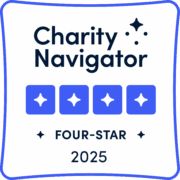Our Story
I am a mother of a 16.5-year-old girl named Angelina. She has Lafora Disease which is a terminal neurological disease characterised by progressive myoclonus epilepsy and tonic-clonic seizures.
“The diagnosis was a complete shock. Angelina was like most other teenagers. She had no signs or symptoms or any abnormalities. She was extremely social, self-motivated, goal-driven, academic and had big dreams for her future. She was in school musicals and attending acting classes and wanted to become a makeup artist and business owner. Her life has changed dramatically. She’s lost her friends, social life, school & independence.”
There is currently NO cure for Lafora Disease that affects 1 in every 4 million people around the world. The average lifespan is roughly TEN years following onset of symptoms.
Individuals with Lafora Disease experience absence seizures, tonic clonic seizures & myoclonic seizures which generally become more frequent and difficult to treat over time and the disease is quick to progress.
– Absence seizures are quick blinking of the eyes with head jolts and sometimes can be so quick you may miss them.
– Myoclonic seizures involve shock-like jerks of whole groups of muscles due to unusual brain activity.
– Tonic clonic seizures typically involve loss of consciousness followed by muscle convulsions that may last up to a few minutes at a time. Other common symptoms include difficulty walking, muscle spasms (myoclonus) leading to difficulty controlling the muscles, behavioural changes, confusion, and progressive dementia.
“Just shy of two years, her schoolwork showed full pages of neat writing, underlining, answering of questions and problem-solving. Now she is lucky to write a few words or read simple sentences. She needs words to be broken down and said slowly so that she can understand. She also has difficulty initiating things. Basic, daily-life decisions, such as what shirt to wear, are a struggle for her.”
In May 2020, doctors inserted a gastrostomy tube so that she could be fed and given medications safely. Her behaviour started to change also; this commonly occurs with changes in the frontal cortex of the brain as a result of progressive dementia. She refuses to eat, co-operate with self-care, get out of bed, or take her medications. Angelina experiences memory loss and her processing speed has slowed significantly that it takes Angelina longer to process & follow conversation. Every day is extremely challenging.
Angelina is also photosensitive and action sensitive. Photosensitivity refers to increased sensitivity to bright and flashing light. Angelina has experienced seizures triggered by very bright environments, so she always wears a hat and sunglasses outdoors. Angelina’s action sensitivity is also known to trigger seizures the more she physically exerts herself, so she is mainly contained in the home or a controlled environment. Angelina’s medications will eventually stop controlling her symptoms before her health declines even further and she becomes bedridden.
Researchers have recently discovered that it is caused by a mutation in one of two genes that control the way cells store glycogen, a form of sugar, resulting in a toxic buildup of Lafora bodies in the brain.
University of Kentucky College of Medicine, biochemist Matthew Gentry founded the Lafora Epilepsy Cure Initiative (LECI) and has been working on therapies for what seems to be over 10 years+ and is hopeful that he may have something available in 1-2 years, but I believe by this time my daughter and other Lafora children will become bed ridden or worse deceased by the time the treatments are available.
Pharmaceutical companies in the USA have been working on treatments and are planning to start clinical trials in 2021 which is promising for Lafora children.
Thanks to the Chelsea’s Hope Lafora Children Research Fund, for the breakthroughs in research so far.
Funding for research is still needed and also support for Lafora families with medical bills. Help save our children by making a donation today! Every little bit counts.


